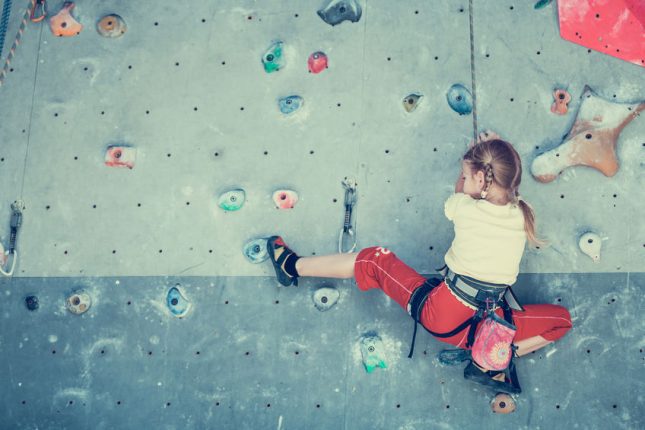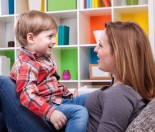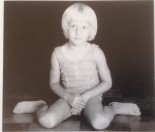During the primary years your child’s development will slow compared to their preschool years, but there’s still a lot of changes that occur. Is your child developing well for their age? This guideline for child development stages for ages 5-12 years is what the average child is developmentally capable of learning at a particular age.
Of course, they will still need to be taught how to do many of the things below, you wouldn’t expect your 7 year old to ride a bike with no training wheels if they’ve never been on a bike before!
It’s also VERY important to remember that every child is different. We all have different skills, develop at our own pace and grow up in different environments. All of this will affect our ability.
That said, children do roughly develop in stages, and it can be difficult to learn new skills, if we haven’t mastered the basics of others. So if you think your child may be falling behind in some of the development skills below, this will give you an area to focus on, and allow you to start a conversation with your child’s teacher, coach or doctor.
The numeracy and literacy milestones below are based on New Zealand’s National Standards. Your child’s school may have slightly different interpretations of the Standards than those in this article.
Child development stages – Is your child developing well for their age?
Child development for ages 5-6 years
Physical
- Rides a two wheeler bike with training wheels
- Learns to skip with a rope and play hopscotch
- Can catch a small ball in one hand
- Uses a pencil or pen with the correct grip
- Often forms letters or numbers backwards
- Letters are often large, unevenly spaced and can go over the line
- Can cut out shapes with scissors
- Can tie shoelaces
- Can brush and comb hair
Social
- Enjoys rule based group games
- Resolves conflicts without seeking adult help
- Understands strengths, weaknesses and preferences of others.
Emotional
- May start to exclude other children from games
- May become protective of family, friends and pets
Numeracy
- After one year at school, they may add or multiply 1 digit numbers by counting all (using their fingers or objects), and subtract by counting backwards.
- After two years at school, they may add 2 digit numbers by counting on (eg. To calculate 49 + 4, they may start at 49, then count 4 more, saying 50,51,52,53.) They may multiply by skip counting (3,6,9…) and divide by sharing objects out equally.
- They can organise objects into categories according to a variety of characteristics.
Literacy
- After one year at school, they may recognise between 300 and 500 common words, and figure out many other words from their knowledge of letter sounds. They should be at the green level or higher of Ready to Read books. To find out the level of the books your child is bringing home, check the colour wheel at the back.
- They may be writing several sentences about their ideas or experiences. They may write many high frequency words correctly and will write some correct letters in unknown words.
- After two years at school, they should be reading at the Turquoise level or higher. They may be able to think critically about what they read and discuss their ideas.
- After two years at school, children may have an understanding of their audience. They will spell most high frequency words correctly. They may use capital letters and full stops for their sentences.
Talk your child’s doctor or teacher if your child is over 6 and
- Frequently bumps into people or objects or trips over a lot
- Doesn’t show signs of problem solving when they do not get their own way
- Rarely shows interest in playing with others
- Isn’t able to carry out their own self care (washing, dressing, brushing teeth etc
Child development for ages 7-9 years
Physical
- Rides a two wheeler bike without training wheels
- Able to swim
- Play team sports well
- Fine motor skills become more refined and easily executed
Social
- Beliefs and worldview are becoming more influenced by peers and school
- Can understand other’s point of view more readily and imagine what it is like to be someone else
- Able to resolve more complex social issues with friends or siblings
- Many will enjoy going to friend’s houses for sleepovers
Emotional/mental
- May start being more responsible with their belongings
- Like to win at games, but most are not yet able to lose graciously
- Understand that Santa is not real
- Tell left from right consistently
- May start to plan more
Numeracy
- After three years at school, they may add by partitioning numbers (eg. To calculate 77+18, they may add 77+10+8=95, or 77+3 to round up to 80+15=95). They may divide by skip counting (eg. To calculate 12/3, they may work out that 4+4+4=12, or 3+3+3+3=12). They may be able to find fractions of shapes and sets.
- By the end of Year 4, they may be able to use their knowledge of addition and subtraction facts, as well as some basic multiplication facts to solve other calculations (eg 8+8 is 16, so 8+7 must be 15). They may subtract by partitioning or using tidy numbers (eg. To calculate 37-9 they may round the 9 up to 10 which is a tidy number, and work out 37-10=27, then compensate by adding the extra 1 to get 28; or they may work out 37-7=30, 30-2=28)
- By the end of Year 5, they may be able to choose a more efficient partitioning strategy to solve more complex equations. They may be able to solve problems by using more than one basic fact. (For example, to solve 48/3, they may use 3×10=30 and 3×6=18, so 3×16=48).
Literacy
- After three years at school, they should be reading at the Gold level or higher. The gold level has fewer graphic supports such as pictures or diagrams to help children understand the text.
- Children may be writing longer stories and using varied language or details to interest their readers.
- By the end of Year 4, children may have finished the Ready to Read series. They will be reading a wider variety of texts including school journals. They may understand stories that are more complex and with more implied information.
- Children may be able to write a variety of text types. Most of their sentences may be grammatically correct and they may spell many familiar words correctly. It is common for children to misspell common spelling patterns at this stage, such as adding a consonant with ‘ing’.
- By the end of Year 5, they may be reading a variety of texts to find information. They may think more critically and analyse the content of the texts more. They will have a greater understanding of complex or ambiguous texts.
- Children may be able to choose which text type is appropriate for a particular task. They may start using paragraphs correctly. They may use quite complex subject specific vocabulary in their writing.
Talk your child’s doctor or teacher if your child is over 9 and
- Becomes frustrated with their ability to express themselves
- Stops enjoying school
- Withdraws from their friends
Child development for ages 10-12 years
Physical
- Able to use adult tools well such as saws, hammers and sewing machines
- Puberty often starts during this age range – although it is not uncommon to start earlier or later
- Acne and body odour can occur
- Children may go through a growth spurt at this stage, often just before any other noticeable sign of puberty. This growth spurt will often make children seem gangly and awkward for a little while.
- Will often have great fluctuation in tiredness, energy and hunger as their bodies start changing. It is not unusual for adolescents to start eating and sleeping a lot more than they used to!
Social
- May start showing an romantic interest in others
- Friendships can be tumultuous as this stage as children are trying to define themselves. They may reject or be rejected by others, often quite painfully.
- Fitting in with their peers may become more important
- May start being embarrassed by parents in public
Emotional
- The changes that occur at this time will often make children anxious
- Start to want more independence from family members
- May develop more self awareness
- May develop mood swings
- May want more privacy
Numeracy
- By the end of year 6, they may be able to solve three digit addition and subtraction problems. They may understand that subtraction is the reverse of addition and use this inverse relationship to help them solve problems (for example turning 21-17=_ into 17+ _ =21). They may use partitioning and tidy number with multiplication and division. They may solve fraction problems using multiplication and division (for example, solving 4/10 of 60 =_ by working out 60/10=6, 6×4=24)
- By the end of year 7, they may be able to solve more complex multiplication and division problems using more than one strategy (for example 6×24, they may solve by working out 6×25-6×1). They may be able to add and subtract with decimal numbers. They may start to understand negative numbers.
- By the end of year 8, they may use their multiplication strategies to solve decimal, fraction and ratio problems. They may use the inverse relationship between multiplication and division (for example turning 56/8=_ into 8x_=56).
Literacy
- By the end of Year 6, children will be reading longer texts more quickly and accurately than in Year 5. They will be independent in choosing a strategy to help them understand a text.
- Children may be writing more complex stories and experimenting with different strategies for different purposes.
- By the end of Year 7, will be reading very complex texts from a range of sources. They will be selecting texts to help them with tasks, for example finding information on the internet for a project. They will be expected to analyse and synthesise these texts to a high level.
- Children may write a wide range of texts. They may be precise and detailed in their information. They will consider their audience and be aware of what their readers may already know, or would enjoy to read. Most words will be spelt correctly by this age.
- By the end of Year 8, the reading and writing expectations are very similar to Year 7. The difference is primarily in the confidence and accuracy with which a child selects, reads and creates texts.
Talk your child’s doctor or teacher if your child
- Withdraws from their friends
- Stops enjoying school
- Suffers from excessive “growing pains”
The information in this article is intended as a guide only. If you’re at all concerned about your child’s development, don’t hesitate to talk to their teacher or doctor.
Early intervention is the best way to solve any issues. Otherwise, sit back and enjoy watching your child as they grow and develop into a lovely young adult. Or at least sit back and enjoy them before you get to the turbulent teens!
For more information on your child’s development, see our school age Development section.






